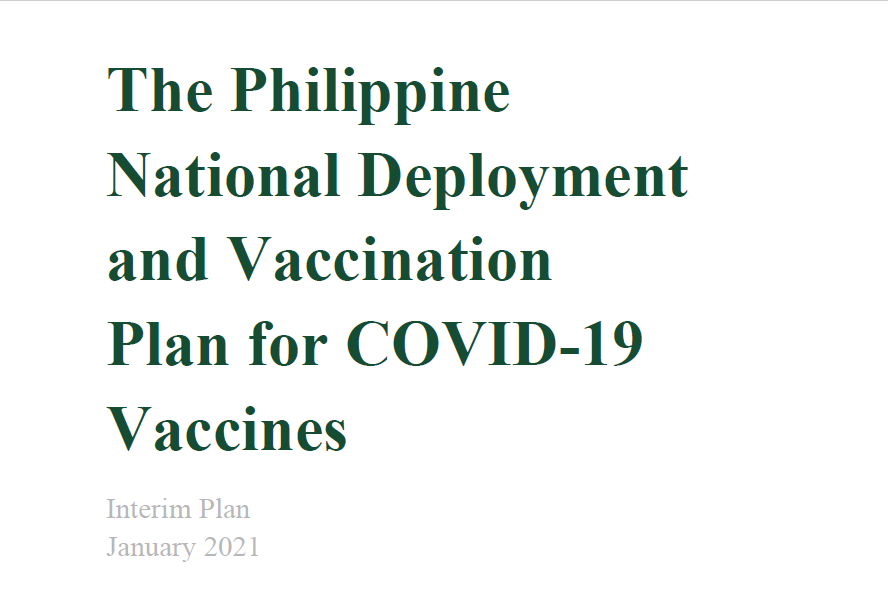Media during the pandemic: Public scrutiny of PH vaccine plan needed
CMFR monitored the coverage of four primetime news programs (ABS-CBN 2’s TV Patrol, GMA-7’s 24 Oras, TV5’s Frontline Pilipinas, CNN Philippines’ News Night), six Manila-based broadsheets (Philippine Daily Inquirer, The Philippine Star, Manila Bulletin, Daily Tribune, The Manila Times, Manila Standard), the counterpart sites of these channels and broadsheets, and selected independent news sites from January 30 to February 5.
Anti-COVID-19 vaccinations have started in some countries in the region, but the first batch of vaccines are due to arrive in the Philippines only in the middle of February. Ret. General Carlito Galvez Jr. who was named “vaccine czar” by President Duterte said these will be supplied by the COVAX Facility, a global initiative working towards equitable distribution of COVID-19 vaccines.
Since December 2020, controversies have hounded the country’s vaccination program, among them allegations that the failure of negotiations with Pfizer was deliberate so as to enable the World Bank to fund vaccines for Filipinos; the clandestine vaccination of Duterte’s close-in security detail; and various statements about the government’s preference for China’s Sinovac vaccine.
The Senate deemed it necessary to look into the government’s plan. Only after three hearings did the government release a copy of the 118-page “Philippine National Deployment and Vaccination Plan for COVID-19 Vaccines” last January 30.
With so many questions and concerns on the vaccine rollout still unanswered, the plan is a key document that could help journalists and the public evaluate how well the plan will work.
But the release of the document and its contents have so far received only minimal news coverage, with hardly any analysis by the media.
Coverage was limited to one or two reports per news organization. The Bulletin and the Times did not even report the release of the plan. Reports noted that the vaccination plan had been approved on January 26 but was only released on January 30, without any explanation for the delay.
Media based their reports mainly on the executive summary enumerating the seven phases of the plan the document describes. News accounts identified the plan’s priority sectors and regions, the storage sites, and the step-by-step process to be adopted in the vaccination centers themselves.
CMFR cheers Rappler’s timeline which they based on an outline from Galvez. It lays out the actions to be done, and a quick analytical tool with which to track the plan’s implementation. The report noted the number of vaccine doses expected to arrive for every quarter of 2021, and how many Filipinos would be covered by these doses.
Gray areas?
The plan mandates LGUs to prepare their own vaccination plans, as well as set three different deadlines, the earliest for February 15, to draw up masterlists of vaccine recipients. The plan specified that cities and municipalities should lead the “masterlisting.”
CMFR notes the problematic implementation of the social amelioration program last year, which involved issues of both logistics as well as the absence basic data. Reporters should get ahead of the story and find out how the LGUs are going to get this job done.
The plan does not include any policy information for the private sector, and those who do not fall under the priority categories and are not eligible for free vaccines. The FDA made clear that the emergency use authorization (EUA) granted to a vaccine is not the same as market authorization, which means that vaccines with EUAs cannot be used for commercial purposes yet. This means that even those who can pay may not be able to receive the vaccine of their choice in the country. Media should be able to update the public about these issues.
The surveys indicate low public confidence in vaccinations, which should prod the media to take up the plan’s special chapter on risk management and community engagement. Journalists should also look into the measures that could address public skepticism over the efficacy and safety of vaccination and to counter misinformation about vaccines in general.
There has so far not been any sign of any effort on the part of government to reach out to the public with information about this massive operation, despite the president’s oft-repeated declaration that only a vaccine can stop the contagion. The lack of public information could severely undermine the program.
Rappler correctly observed that “The Duterte government’s timeline for its vaccine plan in 2021 hinges on many things – including delivery, storage, local government plans, and drawing up of masterlists – going right.”
Journalists surely realize that they can do their part in raising public awareness of the vaccine program. Citizens should be empowered with information that will allow them to check against possible missteps that could make this huge national undertaking a failure.

Leave a Reply